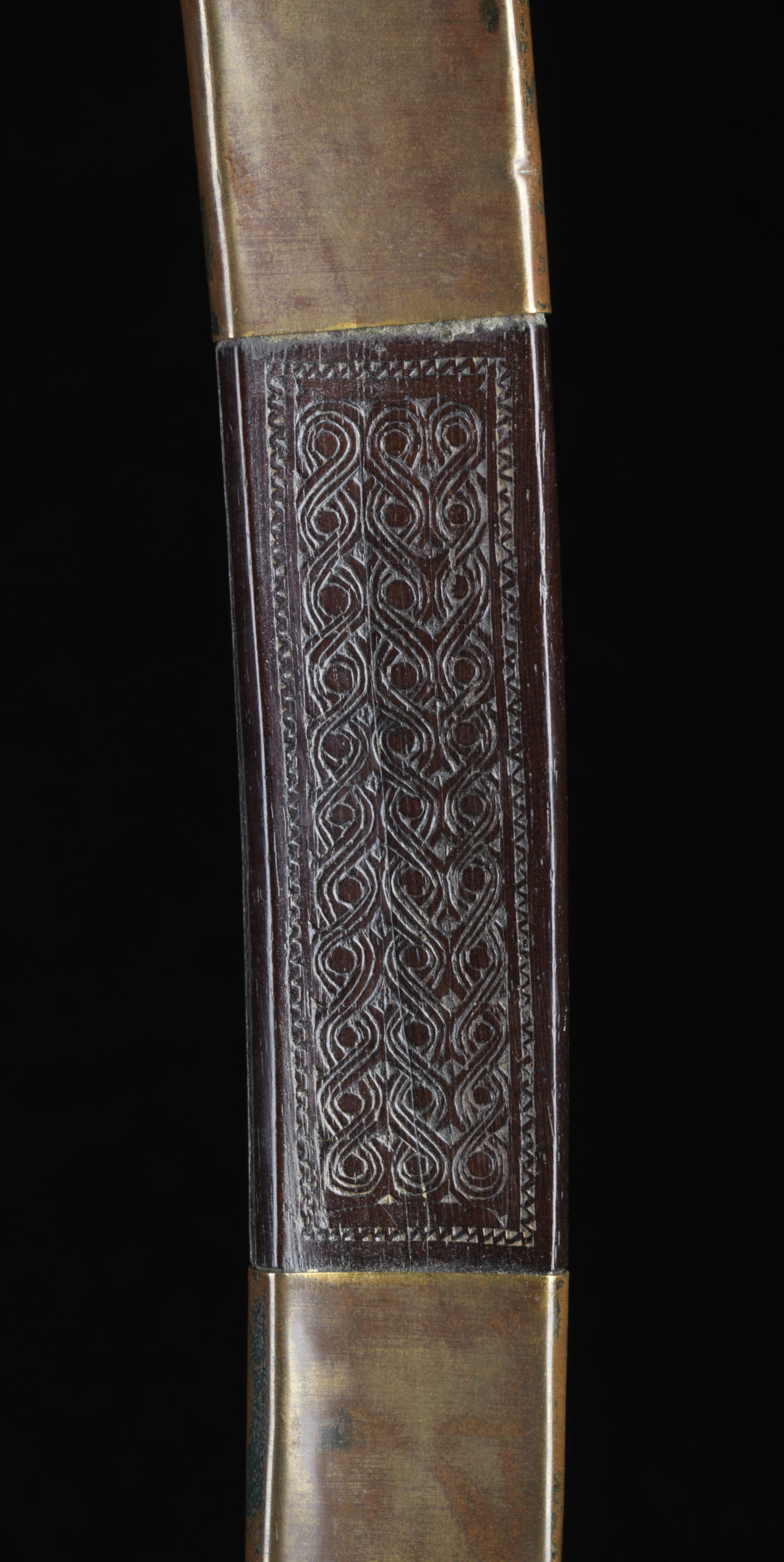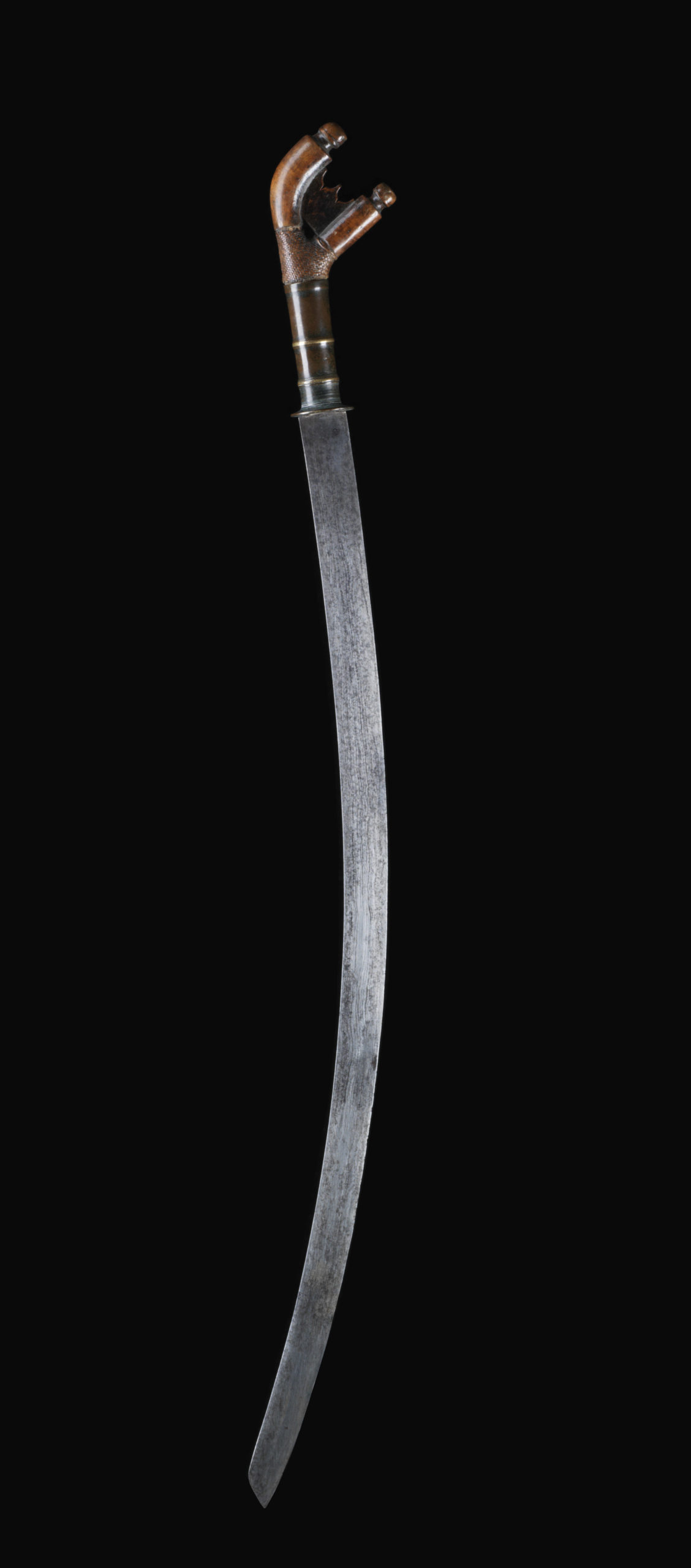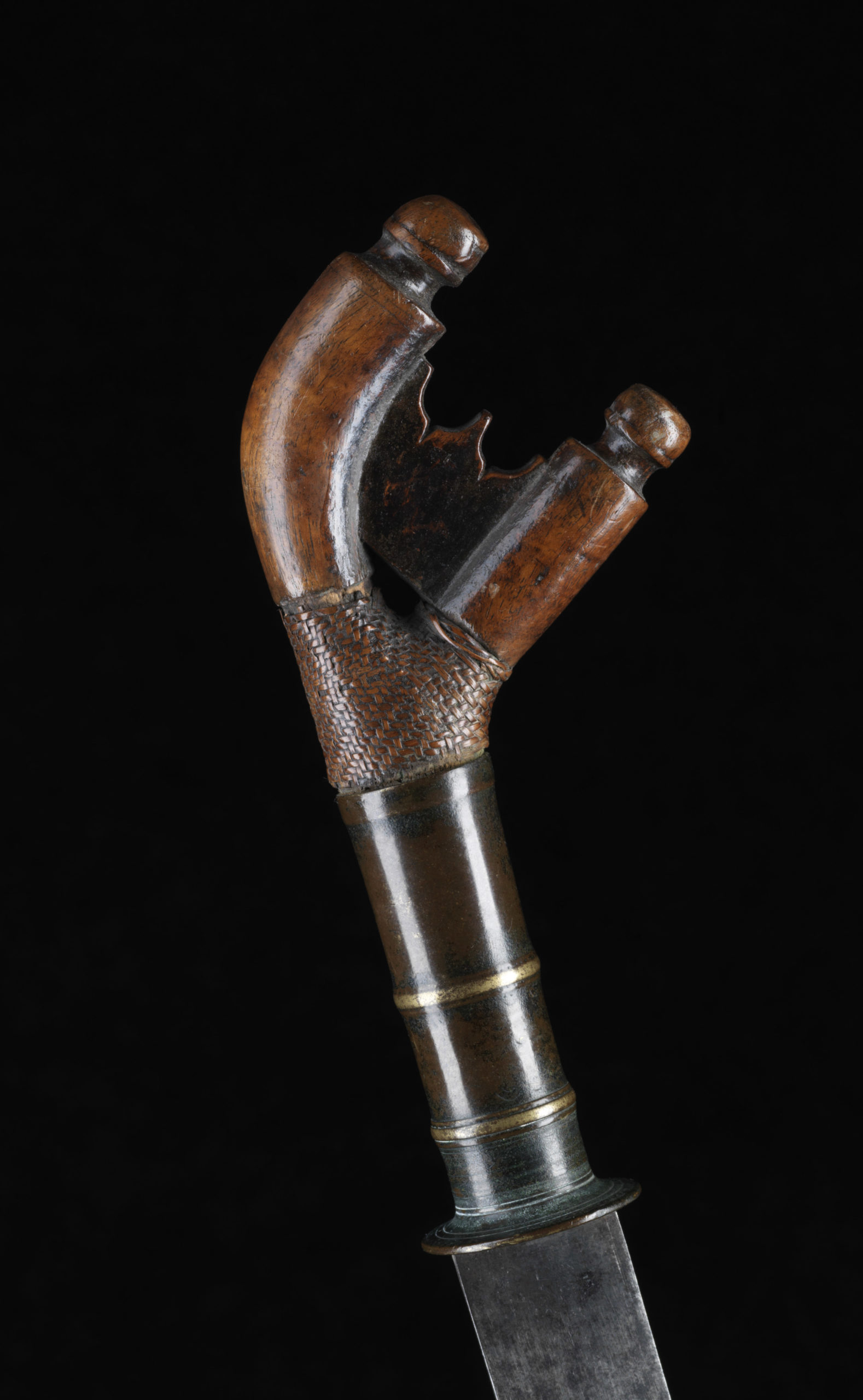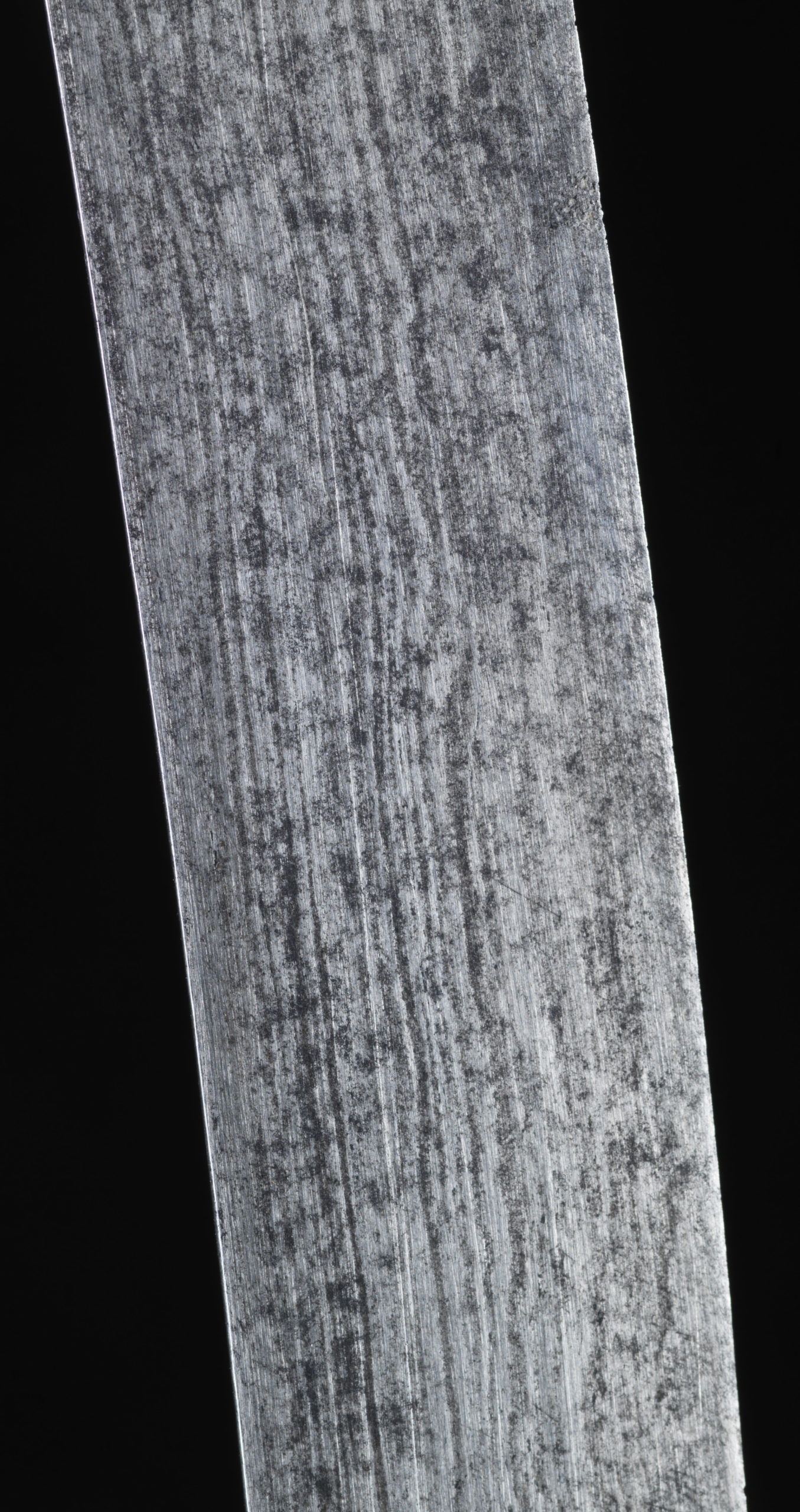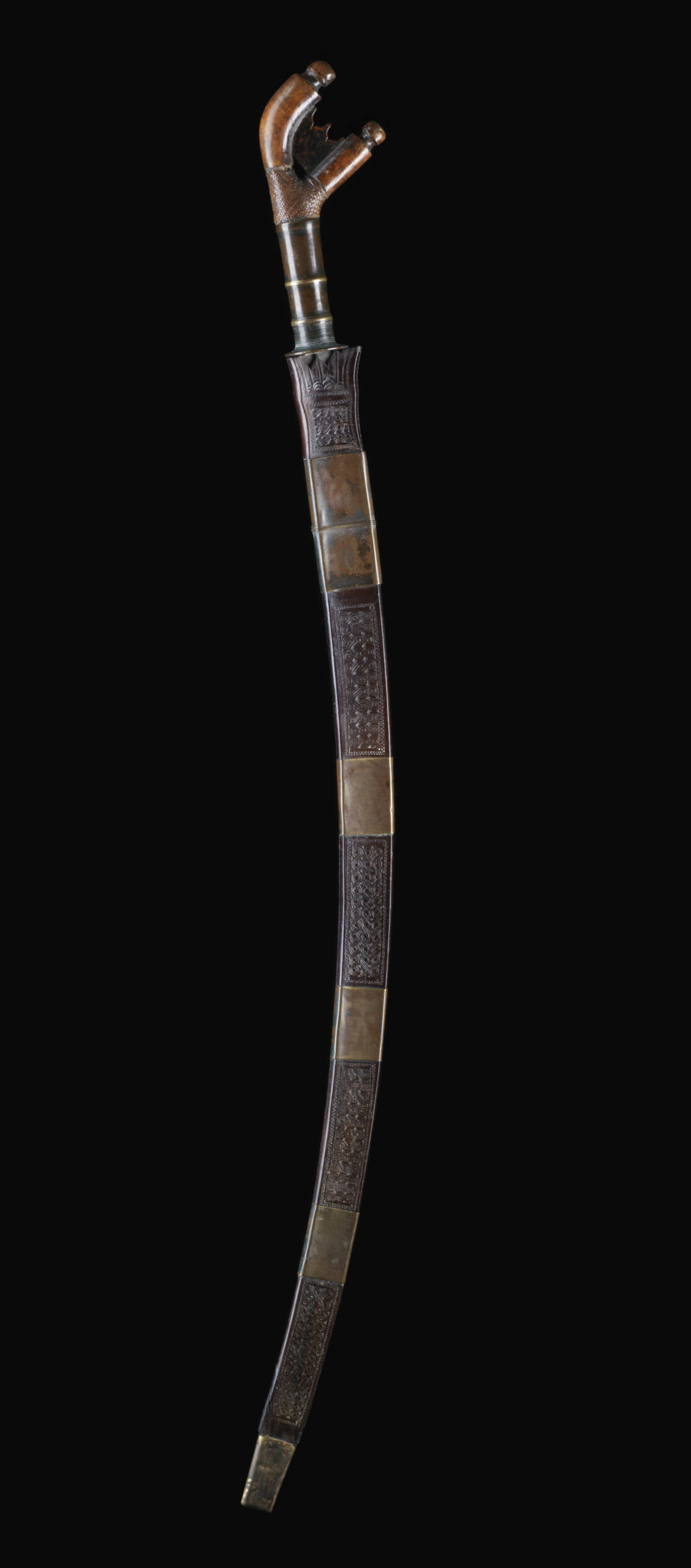Sword “parapat”
| Object | Sword “parapat”, “pakayun” |
| Culture | West-Borneo |
| Time | 19th century |
| Dimension | Length 93 cm |
| Material | Steel, non-ferrous metal, rattan |
The sword presented here has a curved, single-edged blade with a strong back. The point is formed by the back which falls abruptly to the cutting edge. The metal shows a distinct forging texture, suggesting that it is made of locally produced steel. The wooden handle ends in a pronounced fork. The body of the handle is made of Tayuman wood (Cassia laevigata), which is widely used as a weapon grip wood throughout Indonesia, Malaysia and the Philippines. The handle is formed by an elongated ferrule of yellow metal, which has a strong age patina. It is optically structured by surrounding bulges. The ferrule ends on the blade side in a plate-like extension which offers moderate hand protection. The upper part of the handle is braided with fine rattan. The scabbard consists of two shells of hard dark wood, which are hollowed out to hold the blade and are held together by several wide brass bands. The flanks are concave and decorated with geometric ornamental carvings in low relief. It was composed of braided bands and zigzag lines inscribed in rectangular fields. The shape of the handle with the widened forked end and the sabre-like curved, relatively narrow blade is derived from North African-Algerian sword forms (saif, nimcha). The common name pakayun is based on a misunderstanding. Paka-yun simply means “something that is carried”. The correct term for this specific weapon form is parapat, which is related to pada, sanskrit “sword”.
Under Ottoman aegis, numerous Muslim merchants, accompanied by North African soldiers, arrived in North Borneo at the latest from the 16th century onwards, where there were prospects for lucrative trade in camphor, spices, gold and precious stones. During the heyday of the Ottoman Empire in the 16th century, a veritable race of Ottomans, Persians and Arabs for the best trading grounds developed in competition with the emerging European trading powers of Portugal, Spain and later England and the Netherlands. During this period, the Turko-Ottoman cultural influence was very strong in the South East Asian archipelago.
The weapon, although the decorative forms show clear similarities with those of the Illanún and Lumad groups of Mindanao, is only common among the Murut. The Murut are an ethnogenetically defined large group that includes 29 subgroups in the mountainous inland regions of Sarawak and Sabah. The languages belong to the Austronesian language family. Murut languages are mainly spoken in Sabah, Malaysia including Sarawak, Brunei and Kalimantan, (Indonesia). The Murut were one of the last groups in Sarawak to abandon traditional head hunting. Today, most Murut have converted to Christianity or Islam. The way of life in longhouses, based on subsistence farming (rice, sago, tapioca, vegetables and many other crops) is largely maintained. Murut (orang murut) means translated “people of the mountains”.
Weiterführende Literatur Zurück zur Raumansicht



